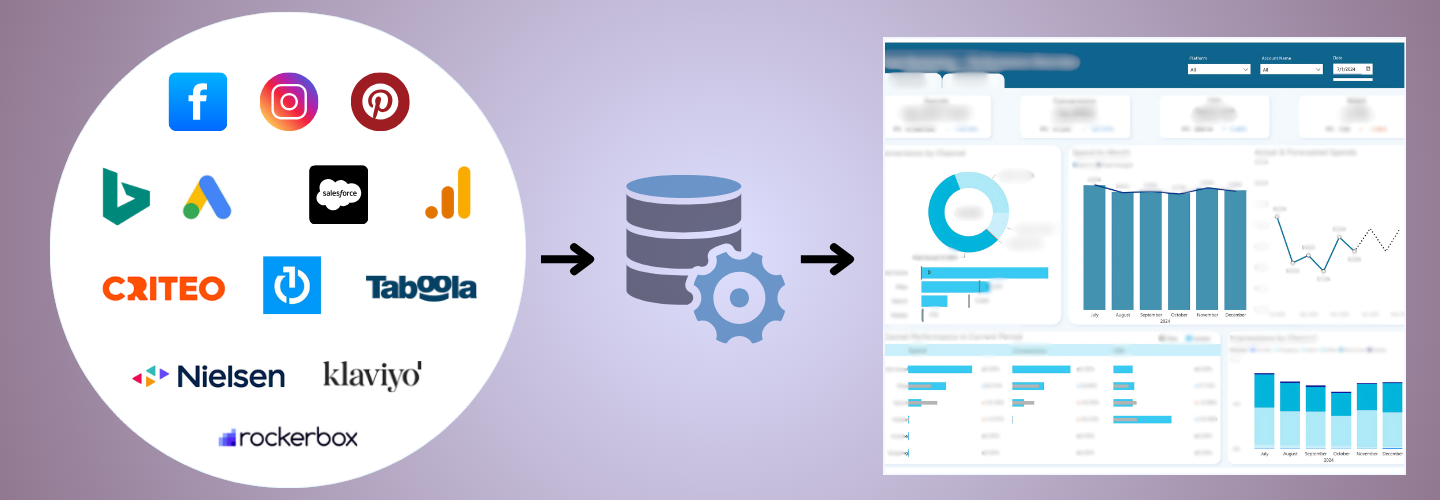In today's fast-paced digital marketing landscape, the need for efficiency and timely insights has never been greater. Analysts are at the heart of campaign success, but their time is often consumed by repetitive tasks like data collection, report generation, and basic analysis.
This is where digital marketing reporting automation comes into play. By automating the reporting process, analysts can save countless hours each week, allowing them to shift their focus from mundane tasks to high-impact activities like optimizing campaigns and driving tangible benefits for clients.
The Traditional Reporting Burden
Before automation, analysts would spend a significant amount of time gathering data from multiple platforms (such as Google Ads, Facebook Ads, Google Analytics, and more), consolidating it, and preparing detailed reports.
This process involved pulling data manually, updating spreadsheets, and checking for errors. Given the volume of data that digital marketing campaigns generate, these tasks could easily take several hours, if not days, each week.
Additionally, these reports were often static and didn't provide the agility needed to respond to campaign changes in real time. Analysts were left with little time to dig deeper into the data, identify trends, or make adjustments to campaigns based on performance.
The Role of Digital Marketing Reporting Automation
With the advent of digital marketing reporting automation, much of the manual work is streamlined, freeing up analysts' time. Automation tools and platforms integrate directly with the various digital marketing channels, collecting data automatically and generating reports in real time. Key benefits of this automation include:
- Time Savings: Automation tools can consolidate data from different platforms into a single, unified report. Instead of spending hours exporting and organizing data, analysts can simply access a pre-built dashboard or automated report. This can save analysts anywhere from 5 to 10 hours each week, depending on the scale of the campaigns.
- Accuracy and Consistency: Automation eliminates the risk of human error when copying and pasting data. Reports are generated using predefined templates and logic, ensuring consistency across different reporting periods. This increases the accuracy of the insights and reduces the need for time-consuming error-checking.
- Real-Time Insights: Rather than waiting for a manual report to be compiled, automated reporting tools can provide real-time performance data. Analysts can access up-to-the-minute statistics, allowing them to adjust campaigns on the fly to optimize performance.
- Customizable Reports: Automated reporting platforms can generate reports that are tailored to the specific needs of different stakeholders. This means analysts don't need to manually create custom reports for every client, instead relying on the flexibility of automation tools to adjust the level of detail based on the target audience.
- Scalability: Automation tools can handle large amounts of data without breaking a sweat. As digital marketing campaigns grow, the need to scale reporting processes can become overwhelming. Automated tools scale effortlessly, allowing analysts to manage more accounts or larger datasets without a corresponding increase in reporting time.
Shifting Focus to Campaign Optimization
The most significant benefit of reporting automation is the ability for analysts to shift their focus from tedious data gathering to more valuable tasks, such as campaign optimization. Instead of spending time on manual reporting, analysts can:
- Analyze Campaign Performance: With more time available, analysts can dive deeper into the data to identify performance trends. This allows them to optimize campaigns by allocating budgets to the best-performing ads, adjusting targeting strategies, and experimenting with new creatives.
- Drive Client Benefits: When analysts aren't bogged down by administrative tasks, they can focus on delivering greater value to clients. By leveraging the time saved, analysts can focus on crafting data-driven strategies that drive ROI, improve conversion rates, and increase customer lifetime value for clients.
- Strategic Insights and Recommendations: Automation tools don't just save time—they also provide a platform for delivering actionable insights. Analysts can use the time saved to present clients with strategic recommendations based on their campaign data, which can improve decision-making and lead to better results.
Conclusion
Digital marketing reporting automation isn't just a time-saver—it's a game-changer. By automating repetitive reporting tasks, analysts can focus on what truly matters: optimizing campaigns, improving performance, and driving measurable benefits for clients. As a result, marketing teams can deliver faster, more accurate reports while simultaneously enhancing their strategic input, ultimately boosting the success of digital marketing efforts. This transition from manual reporting to automated processes is not just a productivity boost—it's an investment in higher quality, client-focused marketing services that drive real business results.



